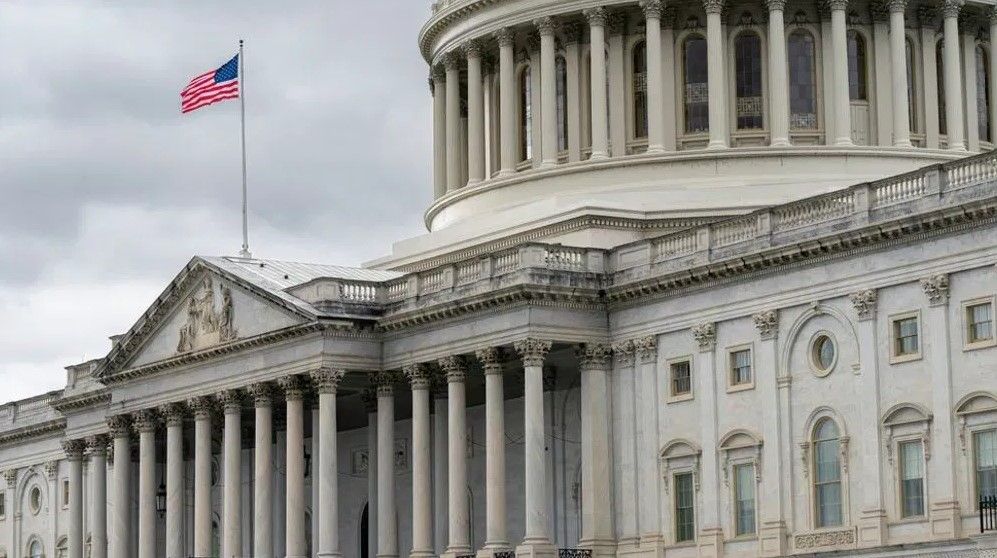FXOpen

The recurring spectre of a government shutdown has once again loomed over the United States, prompting concerns about its potential economic consequences. The shutdown may occur this weekend unless lawmakers agree on spending levels and whether to give more aid to Ukraine. Economists and analysts are closely examining the situation, weighing the likelihood of a recession, and evaluating the resilience of the American economy in the face of this uncertainty.
The Longer the Shutdown, the Greater the Damage
A recurring theme has emerged from past government shutdowns: their duration directly correlates with the extent of economic damage.
A brief shutdown is unlikely to significantly impede economic growth or push the nation into a recession, as both Wall Street and the Biden administration economists contend. Historical evidence from previous government funding stoppages supports this assertion, revealing limited economic disruption during short-lived closures.
However, the narrative shifts when contemplating a protracted shutdown scenario. A sustained government shutdown has the potential to erode economic growth, potentially impacting President Biden's re-election prospects. This challenge would compound other economic headwinds anticipated in the final months of the year, including elevated interest rates, the resumption of federal student loan payments, and a possible extended United Automobile Workers strike.
Consumer Confidence and Economic Mood
Beyond its direct economic impact, a government shutdown could adversely affect consumer sentiment. In past shutdowns, consumer confidence exhibited declines, primarily attributed to rising gas prices. The Conference Board's consumer confidence index saw an average drop of seven points in the month preceding previous shutdowns, though some of this decline reversed during the month following a reopening.
Shutdowns generate programmatic consequences that impose unwarranted economic stress and losses not fully reflected in GDP metrics. These include delays in Small Business Administration loans, the elimination of Head Start slots for working parents' children, and potential jeopardy to nutrition assistance for millions.
Quantifying Economic Impact
Goldman Sachs economists have estimated that each week of a government shutdown could reduce growth by approximately 0.2 percentage points.
This primarily results from federal workers going unpaid during shutdowns, immediately extracting spending power from the economy. However, these economists anticipate a subsequent growth increase of a similar magnitude in the quarter following the shutdown, driven by federal work resumption and the disbursement of back pay.
Past estimates by various economists and administrations align with this projection. Notably, the Trump administration calculated that a month-long shutdown in 2019 reduced growth by 0.13 percentage points per week. Following the shutdown's conclusion, the Congressional Budget Office indicated that real GDP had contracted by 0.1% in the fourth quarter of 2018 and 0.2% in the first quarter of 2019, with a slight overall loss in annual GDP.
Potential Challenges Beyond Previous Shutdowns
While historical evidence suggests that shutdowns have left limited permanent scars on the economy due to rebounding growth and confidence, present circumstances may warrant caution. Concerns arise regarding the spending behaviour of federal workers and potential difficulties for government contractors in recovering lost business.
A prolonged shutdown would disrupt the release of crucial government economic data, including reports on jobs and inflation, impairing the Federal Reserve's ability to make informed decisions on interest rates in the ongoing battle against inflation. This poses a more significant risk to economic growth compared to previous shutdowns, as it could hinder policymakers' ability to act effectively.
Economic Resilience but Slowing Growth
While the US economy appears robust enough to absorb a temporary setback, economists foresee a slowdown in the coming months, particularly if a government shutdown extends for several weeks. Key factors contributing to this include high interest rates, the resumption of federal student loan payments, and the potential for recession risks if the shutdown persists.
Analysts project third-quarter GDP growth, followed by a slowdown in the fourth quarter. They note that a two-week shutdown would have a limited impact, but if it extends for an entire quarter, it could push GDP into negative territory.
Beyond the economic realm, a government shutdown could underscore political dysfunction in Washington, unsettling investors and causing yields on Treasury bonds to rise. Elevated borrowing costs could result from this turmoil, increasing economic burdens.
Final Thoughts
As the threat of a government shutdown looms, the United States navigates a complex economic landscape. While the nation's economic resilience is evident, the duration of the shutdown remains a critical variable. A short hiatus may lead to minor disruptions, but a prolonged closure poses more substantial risks to economic growth, consumer confidence, and Fed policy effectiveness.
This article represents the opinion of the Companies operating under the FXOpen brand only. It is not to be construed as an offer, solicitation, or recommendation with respect to products and services provided by the Companies operating under the FXOpen brand, nor is it to be considered financial advice.
Stay ahead of the market!
Subscribe now to our mailing list and receive the latest market news and insights delivered directly to your inbox.








